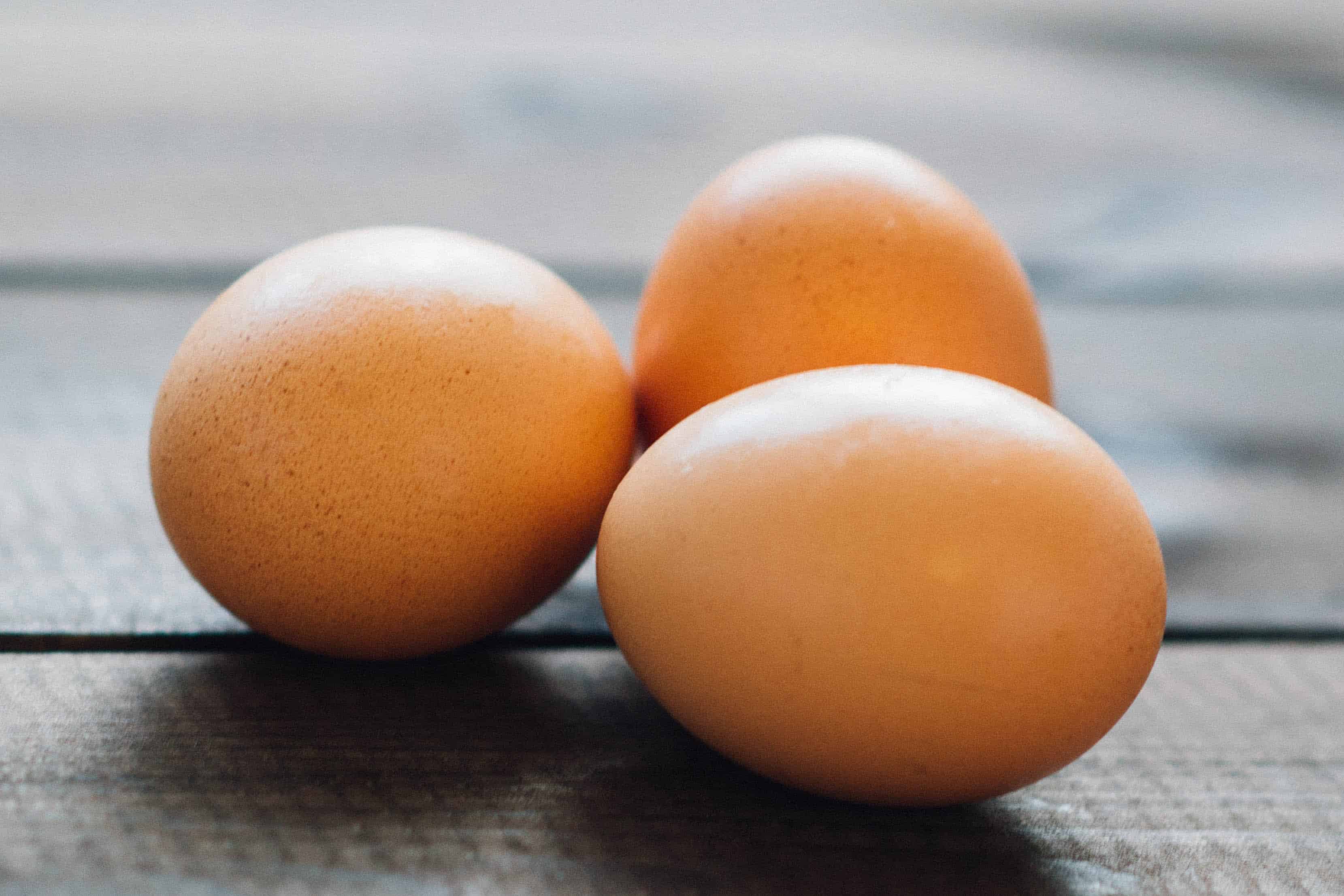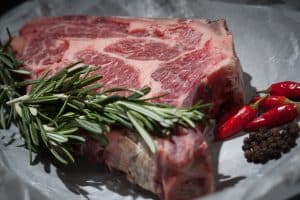If you’re thinking about going on the carnivore diet, I’m sure you’re wondering how much it’ll cost (you can see my full weekly budget here).
If you’re already on the carnivore diet, you’ve probably realized that grocery expenses can stack up pretty quickly. Mine were coming in at around $115/week.
As a college student, I’m always looking for ways to save money on food without compromising on food quality.
Using the tips in this article, I’ve trimmed my grocery bill down by over $25/week while still eating primarily grass-fed meat and wild-caught fish.
The carnivore diet doesn’t have to be more expensive than your typical Paleo or low-carb diet, in fact, it can be cheaper depending on how many fresh vegetables you’re buying.
Without further ado, let’s jump into 10 ways to save money on the carnivore diet.
1. Put it on ice
Freezing meat, and more specifically, buying already frozen meat, is usually the way to go.
If something is on sale and you know you’re going to eat eventually, why not buy a bunch of it and stick it in the freezer?
Pro-tip: If you live with roomates, they might be a little surprised to open the freezer and find 20 wild-caught salmon fillets.
Some frozen meat is actually cheaper than refrigerated meat at grocery stores. I know frozen wild-caught salmon is a dollar or two cheaper than “fresh” salmon at Trader-Joe’s, with no noticeable difference in taste.
2. Go with Ground Beef Instead of Steak
I think we can all agree that there’s nothing quite as delicious as steak (well, maybe bacon). With that being said, steak, and in-particular, grass-fed steak, can be pretty expensive.
At my local grocery store, grain-fed sirloin steak runs $10/pound and grass-fed runs closer $13/pound. On the flip side, 85% lean grain-fed ground beef can be as little as $4/pound, whereas I regularly get 100% grass-fed ground beef for $6/pound at Trader Joe’s and Target.
That’s a pretty huge difference.
While ground beef might not be as nutritionally dense as steak, that’s not to say it doesn’t have its benefits.
One more tip: Fattier cuts of ground beef are going to be cheaper and have more calories than lean cuts. Embrace the fat!
3. Supermarket Secret: Chuck eye steaks
Sick of ground beef? Want to savor a delicious steak but don’t want to break the bank?
Chuck steak is a fatty cut of steak near the upper shoulders of the cow.

You typically can get grain-fed beef chuck for around $5/pound, and I’ve seen grass-fed beef chuck for as little as $7/pound.
I think it tastes just fine, and it’s not a nutritional lightweight either.
Sure, it’s a fattier cut of meat, but you’re actually getting just as much zinc, selenium, iron, and potassium as sirloin steak. It has a little less protein, but if you’re like most people on the carnivore diet, getting enough protein isn’t a problem.
4. Try out other meats and seafood

While a huge part of your carnivore diet is probably going to be beef, don’t forget to look for deals on other types of meat. Of course, if you only can handle beef, then stick to it, but I’ve found some stellar deals on lamb shoulder, bulk bacon, wild-caught salmon, and even whole chickens.
Check your local butchers or grocery stores for deals on game meat too. You’d be amazed what kinds of exotic meats you can get at low prices.
5. Learn to love fat
Protein fills you up, but it’s also very expensive.
Fat, on the other hand, can be an extremely affordable source of energy.
If you can tolerate it, grass-fed butter is one of the cheapest pound-for-pound calorie sources out there.
Let’s compare 8oz. of grain-fed steak vs. 8oz. of grass-fed butter:
| Food | Fiber | Zinc | Manganese |
|---|---|---|---|
| Chickpeas | 12.5g | 2.51mg | 1.69mg |
| Lentils | 15.6g | 2.51mg | 0.98mg |
| Peas | 8.8g | 1.64mg | 0.72mg |
| Kidney Beans | 13.6g | 1.60mg | 0.76mg |
| Black beans | 15.0g | 1.93mg | 0.76mg |
| Pinto beans | 15.4g | 1.68mg | 0.77mg |
Grass-fed butter is nearly 5 times cheaper than your typical grain-fed steak.
I’m not saying you should skip the steak and eat a stick of butter, but try adding more butter to your existing meals. Cook with more fat, put more fat on your meat, or (if you can tolerate it) put it in your coffee or tea.
One more tip: If you have a hard time handling butter or dairy, try grass-fed ghee. Its lactose, casein, and whey-free. Beef tallow is another solid choice.
6. Finds ways to reuse meat

If you’re getting meat on-the-bone, don’t just throw out the old bones, use them to make bone broth!
If you’re buying full animals and tossing the organ meats, try mincing them up and throwing them in ground meat – you’ll hardly even taste them.
If you have a large amount of beef fat that you’re not going to eat, consider making beef tallow out of it. Beef tallow has an extremely high smoke point, making it great for high-heat cooking.
7. Buy in bulk
Buying in bulk is more difficult for some than others. For instance, I can’t buy beef in-bulk due to limited freezer space, and a temporary living situation.
That said, if you can buy in bulk, you can save a ton of money.
Check out the eatWILD directory for grass-fed and pasture-raised farms near you, or you could try buying in-bulk online (it’s not always the cheapest, but sometimes you’ll find some amazing sales).
When you buy a whole cow, you’ll get organ meats, tons of steak, and lots of other goodies, and save tons of money in the process.
I know it sounds bizarre, but going directly through a farm can save you tons of money on beef, eggs, chicken, pork, and even more exotic meats.
8. Befriend your butcher

Skip the supermarket and go to your local butcher.
They might not always have the lowest prices on everything, but you’re almost guaranteed to find more variety, more options, and more deals.
I try to always stop at the butcher before going to the grocery store. I get unique and on-sale items at the butcher, and then necessities I didn’t grab at the grocery store.
Don’t forget about local cheese shops too – if you can tolerate dairy these are great places to get raw, unpasteurized cheeses.
9. Know when to go organic (and when to skip it)
There are certain cuts of meat that I would highly recommend going organic, grass-fed, and wild-caught for.
Liver and organ meats should always be grass-fed. The liver is responsible for filtering and storing of toxins, so low-quality liver is going to have more toxins and less bio-available nutrients than grass-fed liver. Toxins and inflammatory omega-6 fatty acids are also found in the fat of animals, so, generally speaking, the fattier the cut of meat the more you’d want to go grass-fed, pasture-raised, or wild-caught.
If you can’t find organic grass-fed liver or organs at your local butcher, I’d highly recommend using Ancestral Supplements Grass-fed Beef Liver & Grass-fed Beef Organs.
US Wellness Meats’ Liverwurst is a great alternative too – it contains grass-fed beef trim (50%), liver (20%), heart (15%), and kidney (15%) that tastes surprisingly good.
With that being said, for leaner cuts, or even most cuts of beef, unless you’re dealing with an autoimmune condition, grass-fed versus grain-fed may not make a huge difference. You’ll need to test this out for yourself, but lean, conventional cuts of beef, chicken breast, and lamb are generally fine for most people.
10. Eggs – Nature’s Best Value

Eggs are arguably the best deal in the carnivore landscape. They’re a complete source of protein and a phenomenal source of healthy fats.
You can pretty easily get a dozen, free-range, organic eggs for $4. If you’re trying to get even more affordable, conventional eggs go for less than $2/dozen.
Fry them in grass-fed ghee, and you’ve got yourself 1200+ high-quality calories for less than $4.
The only catch? Many people don’t tolerate eggs well.
If you experience indigestion, bloating, or itching after eating eggs, they may not be for you.
Closing Advice – Ask yourself how much your health is worth.
I know it can be difficult to adhere to the Carnivore Diet, but if you are really, truly suffering from an autoimmune condition or disease, and the carnivore diet is what you need to feel better, well, can you really put a price on that?
This doesn’t mean you only have to spend money on food, far from it. It just means that if you need to make financial adjustments in order to make the carnivore diet work, keep in mind that your overall health, well-being, and quality of life will prosper from it.
For me, nothing beats the way I look and feel on the carnivore diet.
Despite being a broke college student and spending $80+/week on groceries, I still think it’s worth it.
There is no one-size-fits-all for diets, and while the carnivore diet may work for some, it won’t work for everyone.
How do you save money on the carnivore diet? Let me know in the comments below, and I’ll add them to the article as I get more tips.

